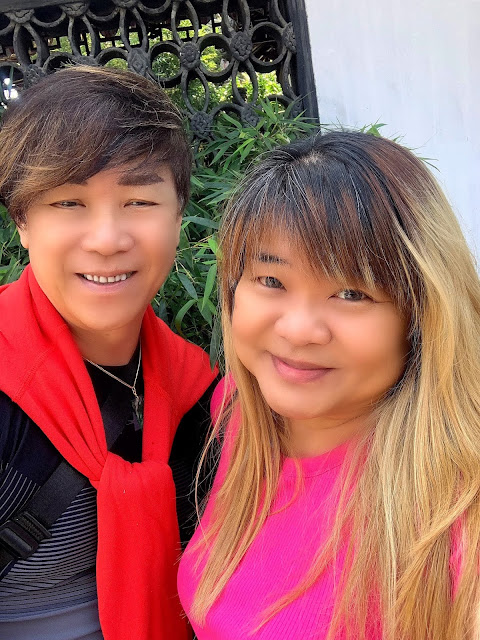Yu Garden or Yu Yuan 豫园
Built in 1559, Ming Dynasty, by Pan Yunduan for his parents. It is a garden of peace and comfort. It took him 18 years to complete. He designed each pavilion, hall or courtyard and named them after pieces from poetry. The family gradually went bankrupt and the garden were restored by rich merchants as time passed.
Surprisingly, this garden used to be a rebel hideaway too! Apparently the secret Small Sword Society named plotted to join a rebellion in Nanjing which aimed to overthrow the Qing Dynasty. The society was defeated.
Looking out from the main entrance of the gardens towards Yuyuan Bazaar area
I looooooooooooooooove the tickets, they are so pretty!
Brochure
San Sui Hall
(三穗堂, "Three Tassels Hall)
Garden Yu's main building. The word 'San Sui" stemmed from the literary quotation 'Three ears of grain on the beam'. In the Qing Dynasty, it was where local authorities celebrated and imperial edicts were read.
The courtyard of San Sui Hall
Yang Shan Hall
The hall is hung with horizontal boards inscribed with "lofty ridges and towering mountains here", with the winding threshold neighboring the pond. Leaning on the balustrades, one could view the rockery. With the agile and delicate overhanging eaves and rake angles, and many palace lanterns, the whole building looks like a sky palace in the night of flood of translucent moonlight.
The garden
The Huge Rockery (Dajia Shan, 大假山) was artistically designed by Zhang Nanyang, a famous garden architect in the Ming Dynasty. This rock formation was made of 2000 tons of rare yellow stones all the way from Wukang in the Zhejiang Province. Each rock was fused to the other using a combination of rice glue and limestone to create a formation that evokes a mini landscape of cliffs. At one time, it was a tallest structure in Shanghai, with a clear view of the Huangpu River.
Wan Hua Tower
(万花楼, "Chamber of the Ten Thousand Flowers)
It was originally the site of Hua Shen (Goddess of Flower) Tower in the Ming Dynasty.
400 year old Ginkgo Biloba tree
Embroidery
The entire Yu Garden consists of more than 30 halls and is divided into 6 regions by tall white walls. Each region is separated by a dragon wall. This dragon wall on the 3rd region is the most impressive. This dragon wall is named 'Dragon crossing the clouds' and the most interesting part is a small toad tucked beneath the dragon's chin! In Chinese mythology, the dragon represents auspicious power and luck while the toad represents longevity.
He Xu Hall
The word 'He Xu' means warm sunshine. Surrounded on 4 sides by the windows with abundant light, the hall faces the rockery and the pond, making it cool in the summer and warm in the winter. A complete set of furniture displayed in the hall is made of the roots of banyan with exquisite craft and elegance.
Jiu Shi Pavilion
Yu Hua Hall
(玉华堂, "Jade Magnificence Hall)
This is the study of the owner of Yu Garden, Pan Yunduan. With a strong favor for Yu Ling Long (Exquisite Jade Stone), Pan built this hall for appreciation.
After visiting Yu Hua Hall, you will enter the Inner Garden, constructed in 1709.
Han Bi Tower (Nanmu Carving Tower)
This tower derives its name from "The woods have already become red when the water just turns green", a poetic line written by Zhu Xi, a famous poet of the Song Dynasty. The whole tower is made of fine nanmu from Burma with exquisite decoration. The beam of the tower was carved with more than 100 hundred kinds of flowers and 40 picture albums of The Romance of West Chamber.
Jing Guan Hall (Qing Hue Hall)
This was once the headquarters of old-style Chinese private bank in the Qing Dynasty. Jing Guan is the inner garden's main building. Its name was derived from the classical Chinese saying "a quiet observation of the scene around gives one a sense of contentment." It means that one can silently view the strange peaks and unusual rocks opposite the hall when sitting inside.
Guan Tao Tower
Once called "Xiao Ling Tai", this tower is a 3 storey wiid structure building. In the past, ascending the top of the tower to have a commanding view towards the east, one could enjoy the waves of the Huangpu River .
Ancient Opera Stage
Where the audience sit to enjoy the opera performance
Exit gate into Yuyuan Bazaar








































































































































































No comments:
Post a Comment